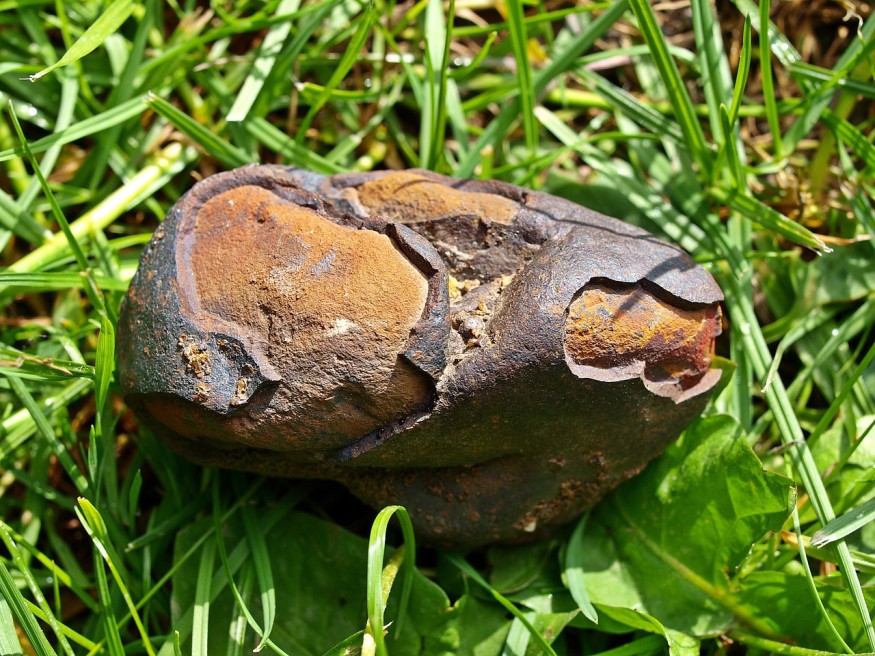A phenomenal meteorite rock was found in a backyard in Balubeuren, Germany, back in 1989. For the last 31 years, it had been left lying in the garden. Finally, in January 2020, its existence was finally shared with scientists who called it a "sensational discovery."
The 66-pound meteorite dubbed the "Blaubeuren" was reported to the Institute of Planetary Research at the German Aerospace Centre. The rock was said to be discovered by chance by a homeowner digging through a cable trench.
On July 7, 2020, the Meteoritical Society, the body that documents all meteorite discoveries and falls and falls around the world, confirmed that it was a standard type H4-5 chondrite meteorite.

Furthermore, it was the largest one found in Germany. The rock was found to be very dense due to its significant iron and nickel content.
From the meteorite's make-up, scientists were able to tell that the Blaubeuren went through at least one violent collision in the past. Weathering on its surface determines that it struck the Earth's surface several centuries ago.
Just like most meteorites, Blaubeuren is believed to come from a larger mass in the asteroid belt between Jupiter and Mars before its order was interrupted, putting it on a collision course with Earth.
Furthermore, Blaubeuren symbolizes the original building blocks of the planets, as it was created during the formation of the Solar System some 4.5 billion years ago. Several centuries ago, what hit the property in Germany is just a fragment of a larger meteorite that hit the Earth's atmosphere.
In the meantime, the exquisite rock will remain with its finder. However, there are plans for it to be put on display in a museum in the future.
What to Do When a Meteor Lands in Your Backyard
Meteorites are valuable both to science and the collecting community. You'll never know when a piece suddenly lands on your front or backyard. Depending on where you live, the meteorite would be considered yours once it lands in your property.
According to some meteorite information posted on Washington University's website in St. Louis, to check for a meteorite's authenticity, the finder could go through the Self-Test Check-List.
It would also be helpful to check out other pictures of meteorites and compare if they look somewhat similar to the rock you found in your lawn. Moreover, it would also be wise to check out information on meteorite statistics.
Another suggestion would be to cut the rock in half to check its interior. About 89% of stony meteorites are considered ordinary chondrites. Furthermore, metal grains can easily be spotted on the sawn surface of an ordinary chondrite.
Lastly, if you have a gut feeling that your discovery is indeed a meteorite, you could obtain a chemical analysis at a commercial rock-testing laboratory. One of the recommended laboratories is Actlabs.
How to Find Meteorites in Your Backyard
It is estimated that about one micrometeorite lands every square meter on Earthly land every year. This means that there are probably tons of micrometeorites right outside your doorstep.
The Jon Larsen of Project Stardust is an advocate for people who go out and find micrometeorites on their own. Many micrometeorites are magnetic, which means you can collect the specimen by simply hovering a strong magnet over the ground.
The materials needed for the quest are simple objects you could probably already find in your house. A cookie sheet, plastic wrap, a strong magnet, a sheet of paper, and a magnifying glass are just some of the tools needed to find micrometeorites.
As exciting as it sounds to find some space rocks, this procedure, however, would require some patience. Once you've got that down, go ahead and explore your vicinity. You'll never know what you might find.
Read also: Lunar Meteorites For Sale: Fifth Largest Moon Rock Found on Earth Up For Grabs For $2.5 Million
© 2026 ScienceTimes.com All rights reserved. Do not reproduce without permission. The window to the world of Science Times.












